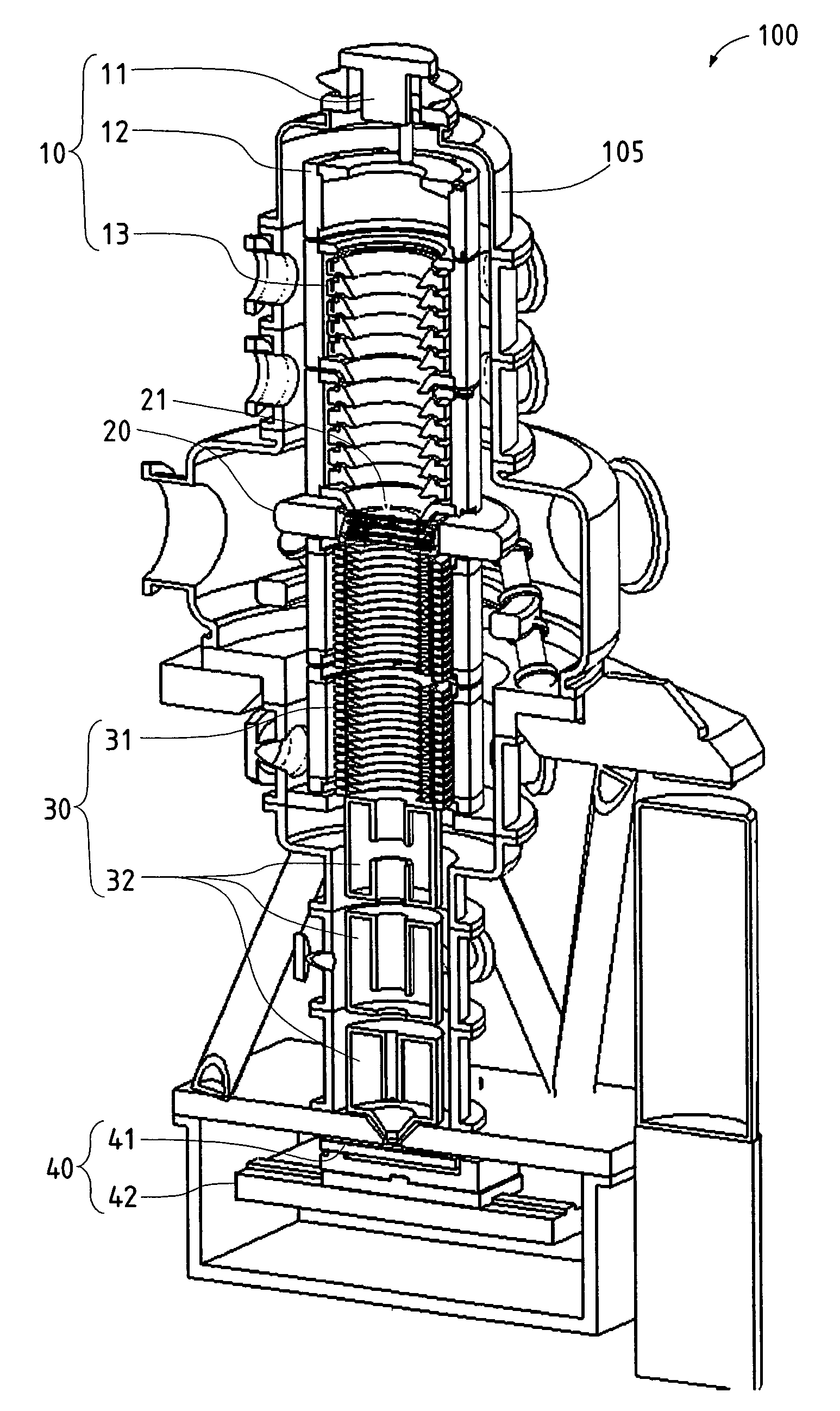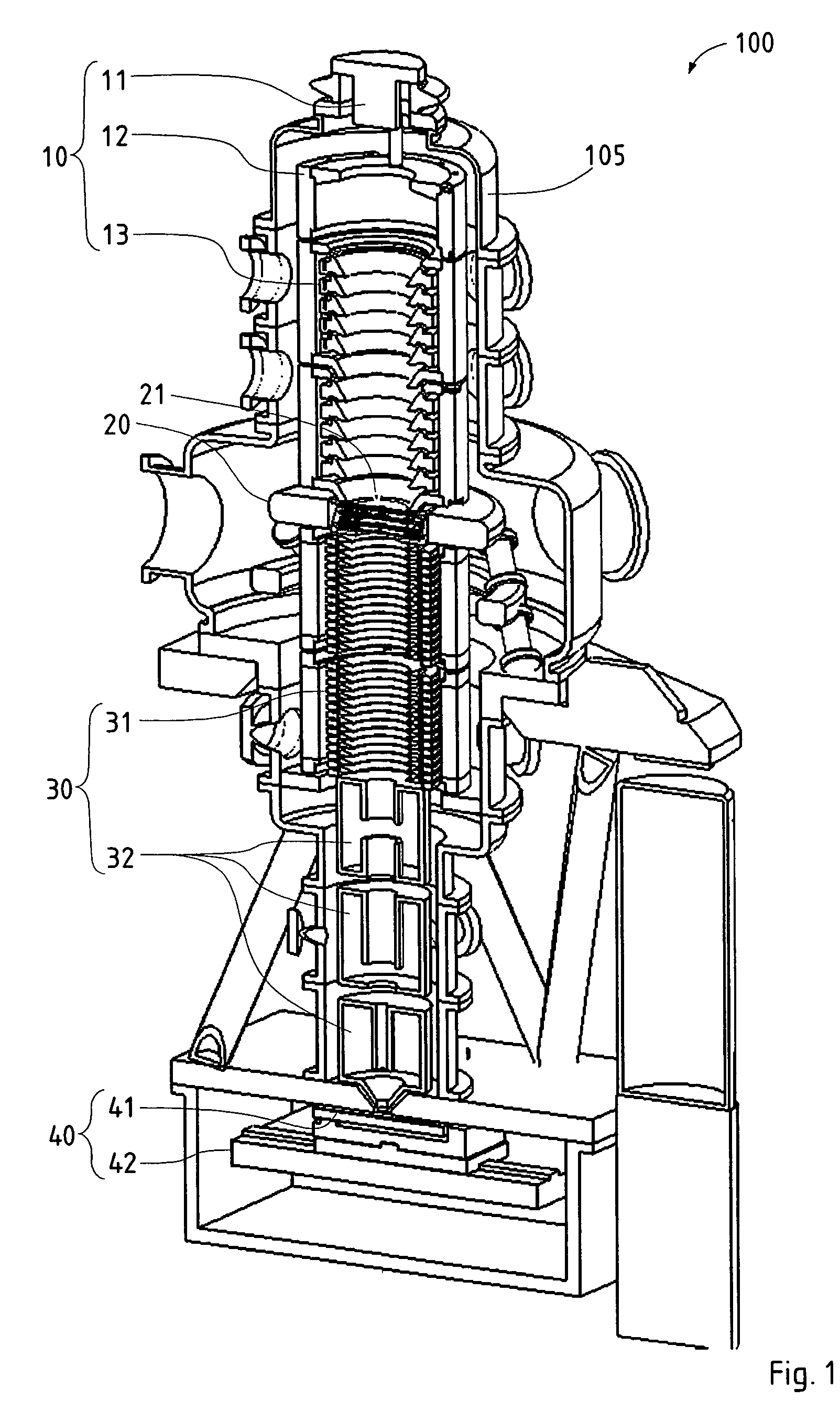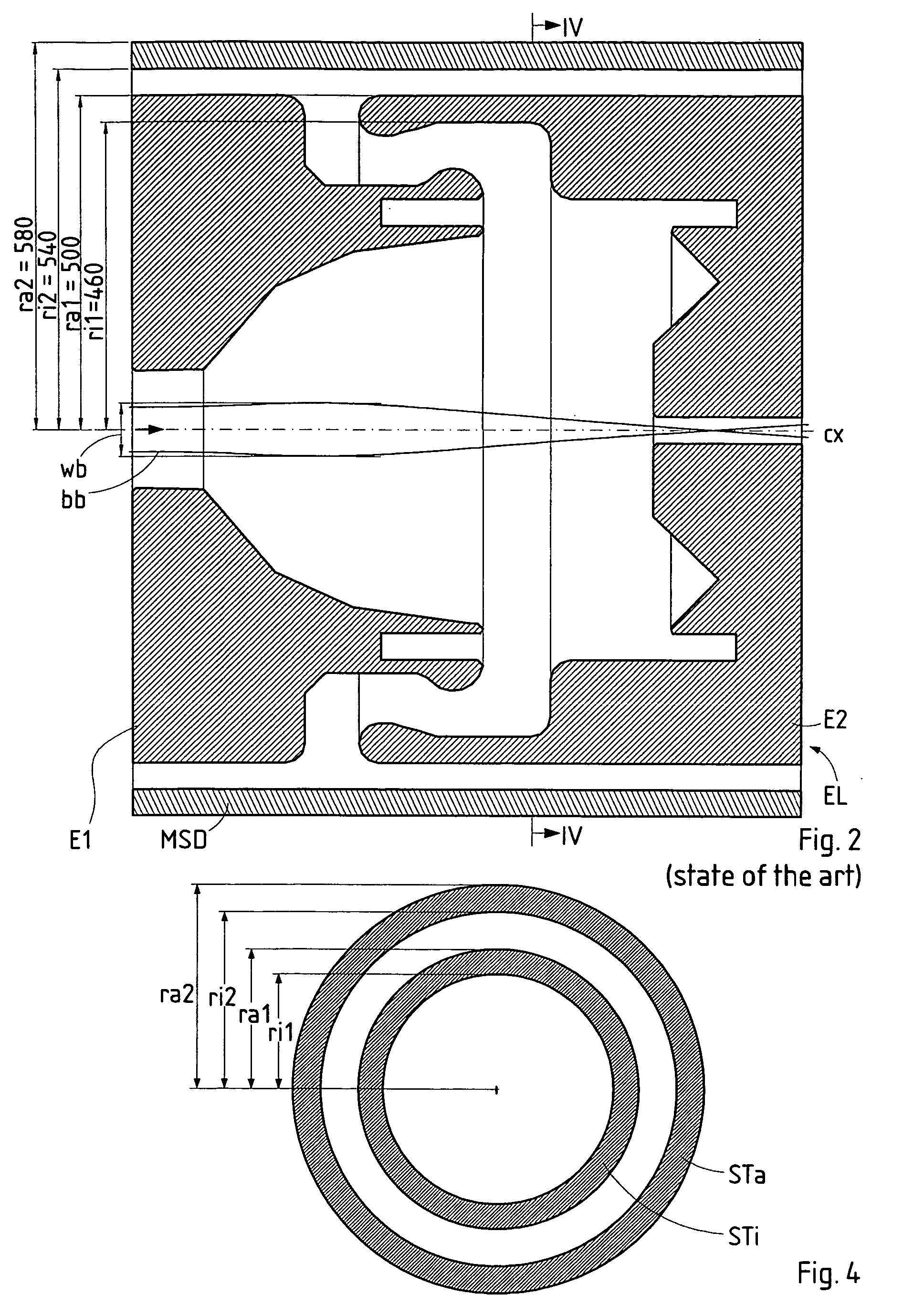Particle-optic electrostatic lens
a technology of electrostatic lens and optical lens, which is applied in the field of electrostatic lens improvement, can solve the problems of affecting affecting the quality of the structure formed on the target, and affecting the effect of the optical aberration, so as to facilitate the magnetic shielding of the electrostatic lens system and reduce the space the lens occupies
- Summary
- Abstract
- Description
- Claims
- Application Information
AI Technical Summary
Benefits of technology
Problems solved by technology
Method used
Image
Examples
Embodiment Construction
[0022]An overview of an charged-particle-beam lithographic apparatus 100 employing a preferred embodiment of the invention is shown in FIG. 1. In the following, only those details are given as needed to disclose the invention. The main components of the lithography apparatus 100 are—corresponding to the direction of the electron beam which runs vertically downward in FIG. 1—an illumination system 10, a pattern definition system 20, a projecting system 30, and a target station 40 comprising the substrate 41. The whole apparatus 100 is contained in a vacuum housing 105 held at high vacuum to ensure an unimpeded propagation of the beam along the optical axis cx of the apparatus. The particle-optical systems 10, 30 are realized using electrostatic and / or electromagnetic lenses. While the apparatus 100 shown in FIG. 1 is designed for electrons, it should be appreciated that the invention also may be implemented with other charged particles, such as hydrogen ions or heavier ions; such an ...
PUM
 Login to View More
Login to View More Abstract
Description
Claims
Application Information
 Login to View More
Login to View More - R&D
- Intellectual Property
- Life Sciences
- Materials
- Tech Scout
- Unparalleled Data Quality
- Higher Quality Content
- 60% Fewer Hallucinations
Browse by: Latest US Patents, China's latest patents, Technical Efficacy Thesaurus, Application Domain, Technology Topic, Popular Technical Reports.
© 2025 PatSnap. All rights reserved.Legal|Privacy policy|Modern Slavery Act Transparency Statement|Sitemap|About US| Contact US: help@patsnap.com



